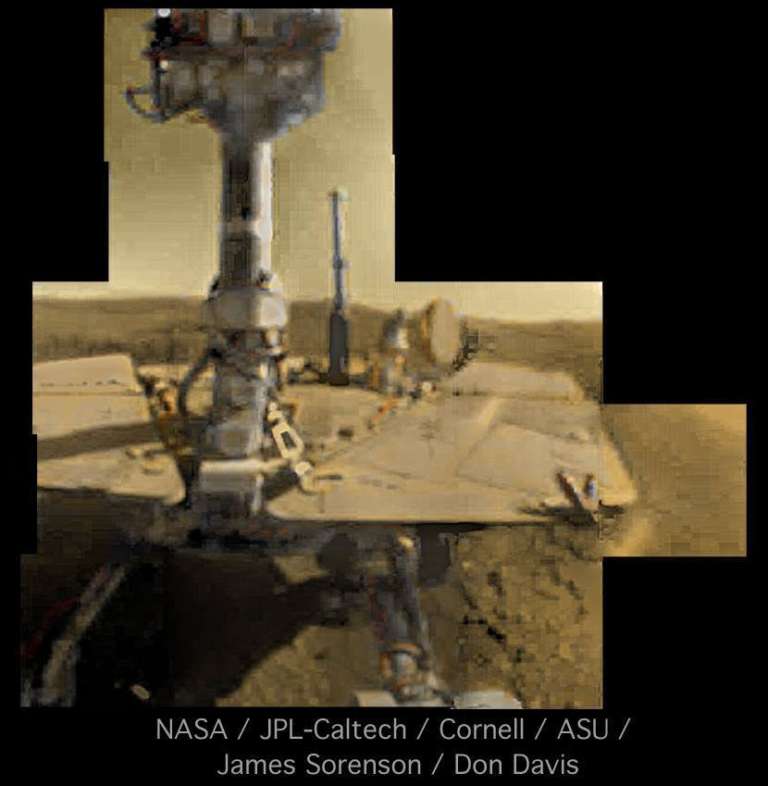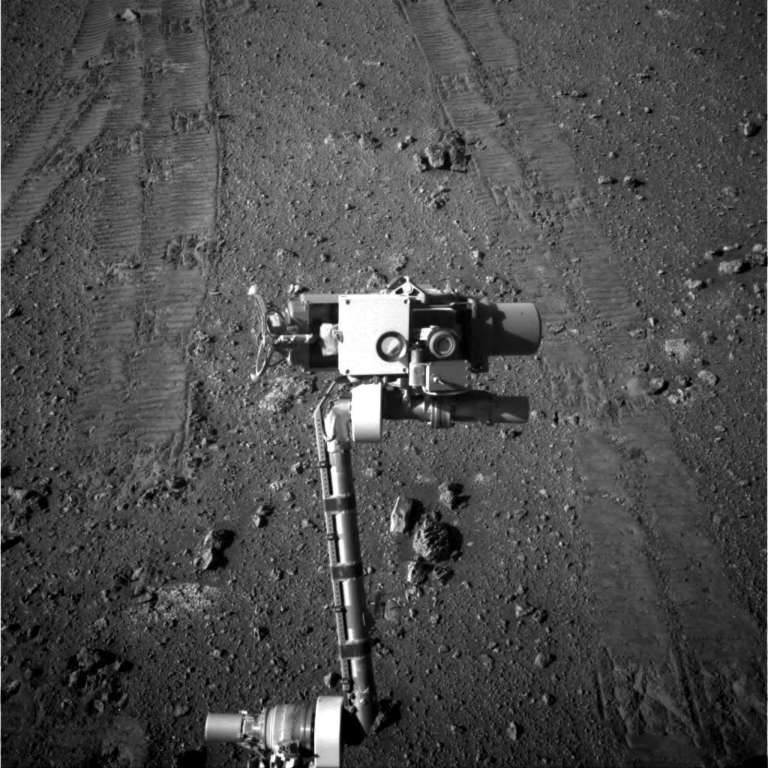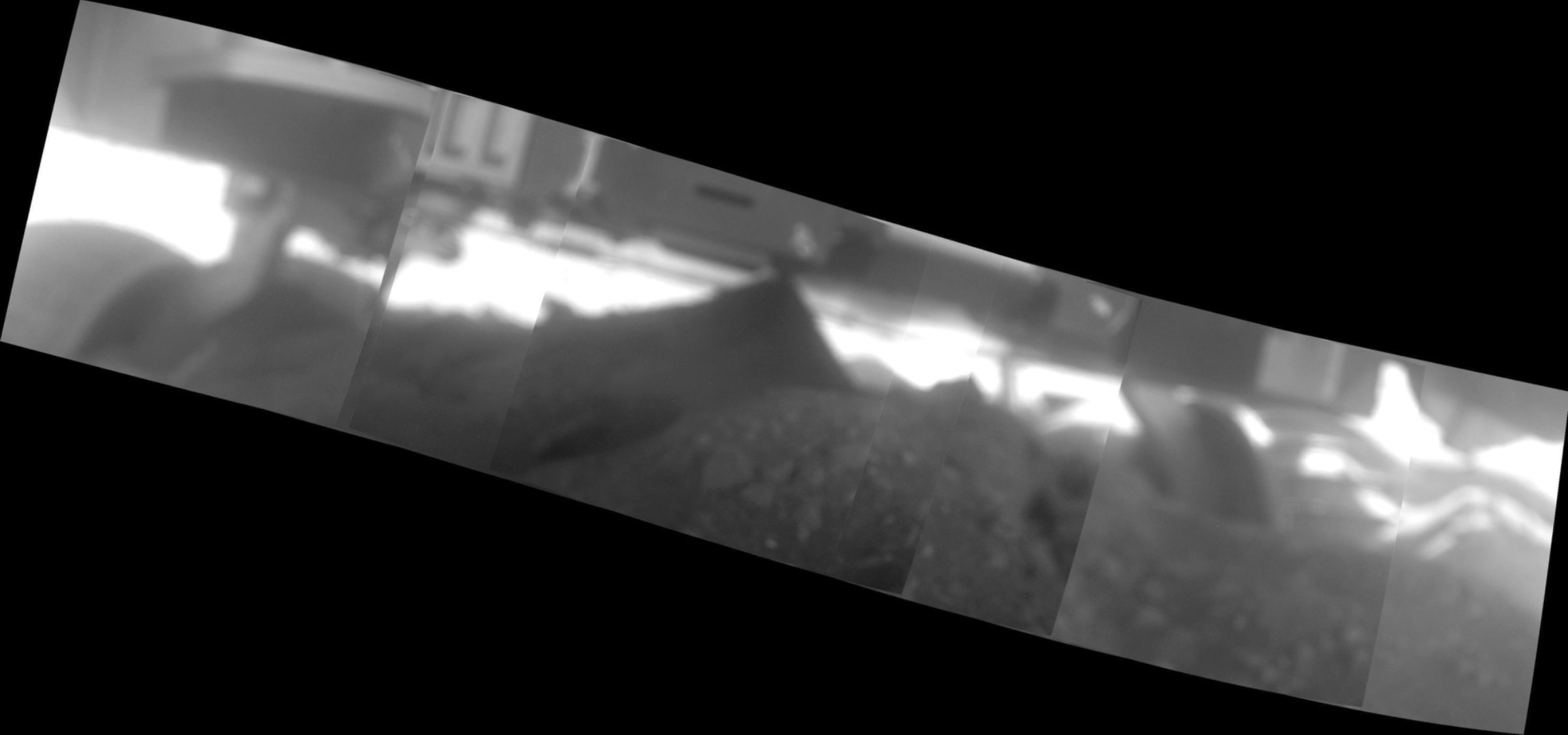Emily Lakdawalla • Feb 20, 2018
Opportunity's sol 5000 self-portrait
Last week, on February 16, the Mars Exploration Rover Opportunity celebrated its 5000th sol on Mars. Pretty good for a rover with a 90-sol warranty. Mission teams often mark sol milestones on Earth, but the activities on Mars usually aren't any different on such a day. But for sol 5000, Opportunity did something special: it took a self-portrait.
Edit: The image has now been updated, with a lower tier added that includes the wheels.

Like Curiosity, Opportunity has a camera on the end of its arm, intended for close examination of rocks. You can see it in this Navcam photo, the reverse perspective of the self-portrait.

Unlike Curiosity's arm-mounted MAHLI, Opportunity's arm-mounted Microscopic Imager has no focus capability. It returns great pictures when held really close to rocks, but it's nearsighted; objects at any distance beyond 6 centimeters away are blurry. (I can relate; this is pretty similar to my uncorrected vision.) But even with all that blur, there's plenty of detail visible in the resulting images to recognize our trusty rover, sitting on Mars, especially after a couple of image processing artists (James Sorenson and Don Davis) apply their mosaicking and coloring skills to it. I love the photo. I'll have more information about the self-portrait's creation in a future guest blog post from Doug Ellison, who was involved in planning the activity.
In the meantime, I thought I'd mention that it's not the first Mars Exploration Rover Microscopic Imager self-portrait; it's just the first that includes the entire rover. Spirit took the self-portrait below, of its wheels and underbelly, after it got stuck at Troy.

Support our core enterprises
Your support powers our mission to explore worlds, find life, and defend Earth. You make all the difference when you make a gift. Give today!
Donate

 Explore Worlds
Explore Worlds Find Life
Find Life Defend Earth
Defend Earth

